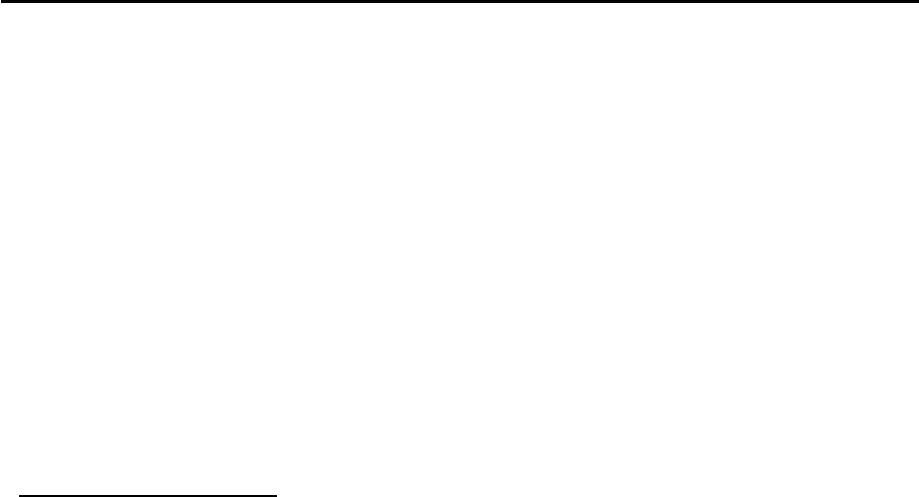ASUSTeK Computer WL167GV3 802.11b/g/n USB2.0 Adapter User Manual WN7511B 1 LF ASU 20100311
ASUSTeK Computer Inc 802.11b/g/n USB2.0 Adapter WN7511B 1 LF ASU 20100311
User Manual

User Manual
WL-167G V3 1
User Manual
WL-167G V3 1-LF-ASU
IEEE 802.11n USB2.0 Adapter
v 01.draft

User Manual
WL-167G V3
WL-167G V3 2
Table of Contents
Chapter 1 Introduction ________________________________________________________ 4
1. Introduction ________________________________________________________ 4
1.1 Product Features ____________________________________________________ 4
1.2 Applications _______________________________________________________ 4
Chapter 2 Hardware _______________________________________________________ 5
2.1 General Overview __________________________________________________ 5
2.2 Hardware Architecture _______________________________________________ 5
2.3 Main Chipset Information ____________________________________________ 5
Chapter 3 Software _______________________________________________________ 5
3.1 Operating System Supported __________________________________________ 6
3.2 Wireless Mode Supported ____________________________________________ 6
3.3 Security ___________________________________________________________ 6
3.4 Configuration ______________________________________________________ 6
Chapter 4 Appearance _____________________________________________________ 7
Chapter 5 Specifications ___________________________________________________ 8
Table 1: Modulation Scheme and Nominal Transmit Power _________________________ 10

User Manual
WL-167G V3 3
Revision History
Edition # Reason for revision Issue date Written by
V 01 Initial Document Feb 12 2010 Troy Chen

User Manual
WL-167G V3 4
Chapter 1 Introduction
1. Introduction
WL-167G V3 is an industrial wireless 802.11n USB Adapter which enables wireless networking
systems to attain data communication speeds up to 150 megabits-per-second (Mbps), while
remaining backward compatible to the existing installed base of Wi-Fi systems worldwide. It
supports operation to the IEEE 802.11b and IEEE 802.11g ,and draft IEEE 802.11n standards.
WL-167G V3 will enable a next generation of high-data-rate platforms for operation in the 2.4
GHz band that deliver a five-fold speed increase. The cost and performance advantages will
make it an ideal solution for high bandwidth enterprise applications, such as wireless video
conferencing and large file transfers. It is compatible with 802.11g standard's mandatory
modulation schemes—Complementary Code Keying (CCK), which is used in 802.11b, and
Orthogonal Frequency Division Multiplexing (OFDM), used in 802.11g and draft 802.11n.
Using CCK ensures backward-compatibility with the installed Wi-Fi 802.11b base, while
OFDM provides the speed required for today's high-bandwidth applications.
1.1 Product Features
High speed for wireless LAN connection, RX up at 150 Mbps data rate.
Backward compatible to the existing IEEE 802.11b/g WLAN infrastructure.
An user-friendly utility to configure SSID, security setup and site survey.
Wireless data encryption with 64, 128 encryption for security.
Internal antenna
Support USB v2.0
Key type housing
WPS support (Pin code)
1.2 Applications
Home networking for device sharing.
Wireless multimedia.
Wireless office for extension Ethernet range.
Mobile networking for notebook PC, Desktop PC, Monitor, PDA with USB port ready
device.

User Manual
WL-167G V3 5
Chapter 2 Hardware
2.1 General Overview
USB 2.0 Interface and 802.11n chipset-on-board design.
Antenna: 2 Internal Antenna (MIFA antenna on USB connector ).
1 LED
2.2 Hardware Architecture
Realtek 8188SU
2.3 Main Chipset Information
RTL8188SU: a highly integrated Wireless LAN (WLAN) USB 2.0 network interface controller
compatible with the IEEE802.11n Draft specification 2.0. It combines a MAC, 1T1R capable baseband
and RF in a single chip.
2.4 PCB dimension
19mm x 44mm (TBD)
2.5 Antenna
MIFA antenna design on USB connector

User Manual
WL-167G V3 6
Chapter 3 Software
3.1 Operating System Supported
Windows 2000 , Windows XP, Windows Vista, Win7, Linux, Mac
3.2 Wireless Mode Supported
AP (Infrastructure) Client mode
Ad-hoc mode
3.3 Security
AP (Infrastructure) mode supports
Static WEP that support both 64 and 128 bit keys.
WPA (TKIP) with PSK
Ad-hoc mode supports
None (plaintext)
Static WEP that supports both 64 and 128 bit keys.
3.4 Configuration
User should be able to select
Mode of operations: AP or ad-hoc mode
Different security modes: none (plaintext), static WEP, WPA/WPA2(TKIP)/PSK as
supported by the respective operating mode.
Channel to operate on
User should be able to perform key management on WPA/PSK and static WEP as
supported by the respective operating mode
A Utility to set SSID, WEP key, site survey, profile manager and dynamically view
configuration and receiving signal quality.
Support for transmitting power configurable.
Support for extended range.
WPS support(Pin code)

User Manual
WL-167G V3 7
Chapter 4 Appearance
LED One Power/Link/WPS
(Green)
OFF All others states
ON Radio On and Associated
WPS Associating when WPS button pressed
Blink Radio On and Scanning
Flash Radio On and Associated and TX/RX Data

User Manual
WL-167G V3 8
Chapter 5 Specifications
Frequency Band:
Draft 802.11n Radio: 2.4 GHz
802.11g Radio: 2.4 GHz
802.11b Radio: 2.4 GHz
USA – FCC 2412~2462MHz (Ch1~Ch11)
Canada – IC 2412~2462MHz (Ch1~Ch11)
Europe – ETSI 2412~2472MHz (Ch1~Ch13)
Japan – STD-T66/STD-33 2412~2484MHz (Ch1~Ch14)
Operating Channels:
IEEE 802.11b/g/n compliant:
11 channels (US, Canada)
13 channels (ETSI)
14 channels (Japan)
Transmit Power and Sensitivity:
TX Output Power:(Typical)
11b 17 +/- 1 dBm
11g 15 +/- 1 dBm@54Mbps
11n 13 +/- 1 dBm
Rx Sensitivity:(Typical)
-84 dBm @11 Mbps
-70 dBm @54 Mbps
-67 dBm @64-QAM, 20MHz channel spacing
-64 dBm @64-QAM, 40MHz channel spacing
Modulation
DBPSK @1Mbps
DQPSK@2Mbp
CCK@5.5/11Mbps
BPSK@6/9 Mbps
QPSK@12/18Mbps
16-QAM@24Mbps
64-QAM@48/54Mpb and above, RX up to 300Mbps

User Manual
WL-167G V3 9
Current consumption(5V DC):
TX: 227mA Max (TBD)
RX: 185mA Max (TBD)
Operating Temperature: 0 ~ 40 oC ambient
Storage Temperature: -10 ~ 70 oC ambient
Humidity: 5 ~ 90% and must be non-condensing
Regulation and certification compliance available:
WHQL
ETSI/CE
ESD: EN61000-4-2, which specifies 4kV contact and 8kV air discharge.

User Manual
WL-167G V3 10
References
Ralink Reference Design Functional Specification
IEEE 802.11b Standard Specification
IEEE 802.11g Standard Specification
IEEE 802.11n draft Standard Specification

User Manual
WL-167G V3 11
NCC Statement
依據 低功率電波輻射性電機管理辦法
第十二條 經型式認證合格之低功率射頻電機,非經許可,公司、商號或使用
者均不得擅自變更頻率、加大功率或變更原設計之特性及功能。
第十四條 低功率射頻電機之使用不得影響飛航安全及干擾合法通信;經發現
有干擾現象時,應立即停用,並改善至無干擾時方得繼續使用。
前項合法通信,指依電信規定作業之無線電信。低功率射頻電機須忍
受合法通信或工業、科學及醫療用電波輻射性電機設備之干擾。
FCC Statement
This equipment has been tested and found to comply with the limits for a Class B
digital device, pursuant to Part 15 of the FCC Rules. These limits are designed to
provide reasonable protection against harmful interference in a residential installation.
This equipment generates, uses and can radiate radio frequency energy and, if not
installed and used in accordance with the instructions, may cause harmful
interference to radio communications. However, there is no guarantee that
interference will not occur in a particular installation. If this equipment does cause
harmful interference to radio or television reception, which can be determined by
turning the equipment off and on, the user is encouraged to try to correct the
interference by one of the following measures:
- Reorient or relocate the receiving antenna.
- Increase the separation between the equipment and receiver.
- Connect the equipment into an outlet on a circuit different from that to which the
receiver is connected.
- Consult the dealer or an experienced radio/TV technician for help.
This device complies with Part 15 of the FCC Rules. Operation is subject to the
following two conditions: (1) This device may not cause harmful interference, and (2)
this device must accept any interference received, including interference that may
cause undesired operation.
FCC Caution: Any changes or modifications not expressly approved by the party
responsible for compliance could void the user's authority to operate this equipment.
IMPORTANT NOTE:
FCC Radiation Exposure Statement:

User Manual
WL-167G V3 12
This equipment complies with FCC radiation exposure limits set forth for an
uncontrolled environment. End users must follow the specific operating instructions
for satisfying RF exposure compliance. To maintain compliance with FCC RF
exposure compliance requirements, please follow operation instruction as
documented in this manual.
This transmitter must not be co-located or operating in conjunction with any other
antenna or transmitter.
2.4GHz operation of this product in the U.S.A. is firmware-limited to
channels 1 through 11.
This EUT is compliance with SAR for general population/uncontrolled exposure limits
in ANSI/IEEE C95.1-1999 and had been tested in accordance with the measurement
methods and procedures specified in OET Bulletin 65 Supplement C.
SAR compliance has been established in typical laptop computer(s) with USB slot,
and product could be used in typical laptop computer with USB slot. Other application
like handheld PC or similar device has not been verified and may not compliance with
related RF exposure rule and such use shall be prohibited.This equipment should be
installed and operated with minimum distance 0.5 cm between the radiator & your body.
Industry Canada Statement
This device complies with RSS-210 of the Industry Canada Rules.
Operation is subject to the following two conditions:
1) this device may not cause interference and
2) this device must accept any interference, including interference that may cause
undesired operation of the device
This Class B digital apparatus complies with Canadian ICES-003.
Cet appareil numerique de la class B est conforme a la norme NMB-003 du Canada.
This device and its antenna(s) must not be co-located or operation in conjunction with
any other antenna or transmitter.
IMPORTANT NOTE:
IC Radiation Exposure Statement:
This equipment complies with IC radiation exposure limits set forth for an uncontrolled
environment. End users must follow the specific operating instructions for satisfying
RF exposure compliance. To maintain compliance with IC RF exposure compliance
requirements, please follow operation instruction as documented in this manual.

User Manual
WL-167G V3 13
This transmitter must not be co-located or operating in conjunction with any other
antenna or transmitter.
2.4GHz operation of this product in Canada is firmware-limited to channels 1 through
11.
This EUT is compliance with SAR for general population/uncontrolled exposure limits
in IC RSS-102 and had been tested in accordance with the measurement methods
and procedures specified in IEEE 1528.This equipment should be installed and operated
with minimum distance 0.5cm between the radiator & your body.
To reduce potential radio interference to other users, the antenna type and its gain
should be so chosen that the equivalent isotropically radiated power (e.i.r.p) is not
more than that permitted for successful communication.
The drawings, specifications and the data contain herein are the exclusive property of Arcadyan
Technology Corp. issued in strict confidence and shall not, without the prior written permission of
Arcadyan Technology Corp., be reproduced, copied or used, in parts or as a whole, for any purpose
whatsoever, except the manufacture of articles for Arcadyan Technology Corp.
Arcadyan makes no warranties with respect to the correctness, accuracy or wholeness of this
specification. The information in this document is subject to change without notice. Arcadyan
reserves the right to make revisions to this document and the product described herein without
obligation to notify any person or entity of any such changes.
WARNING
This document is intended for internal use only. A Non-Disclosure Agreement (NDA)
is required to release this document under any circumstances